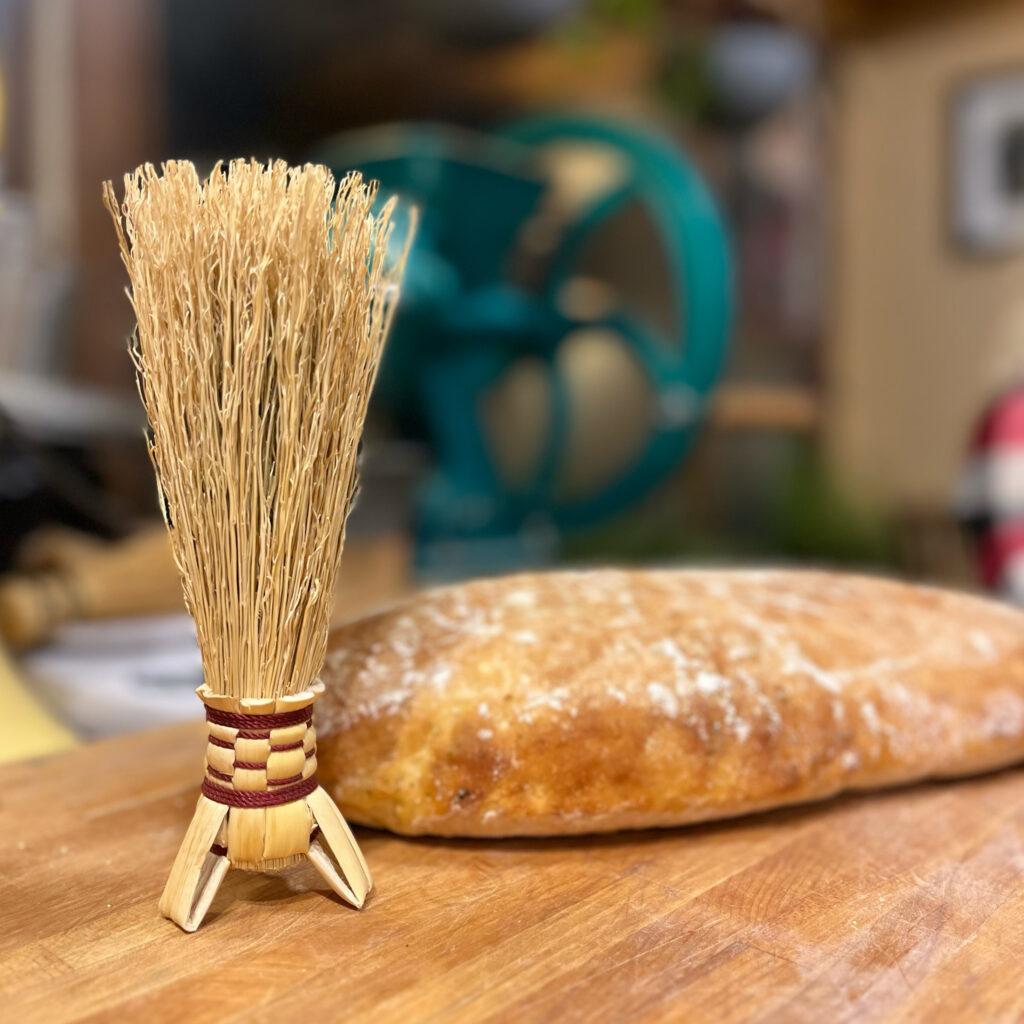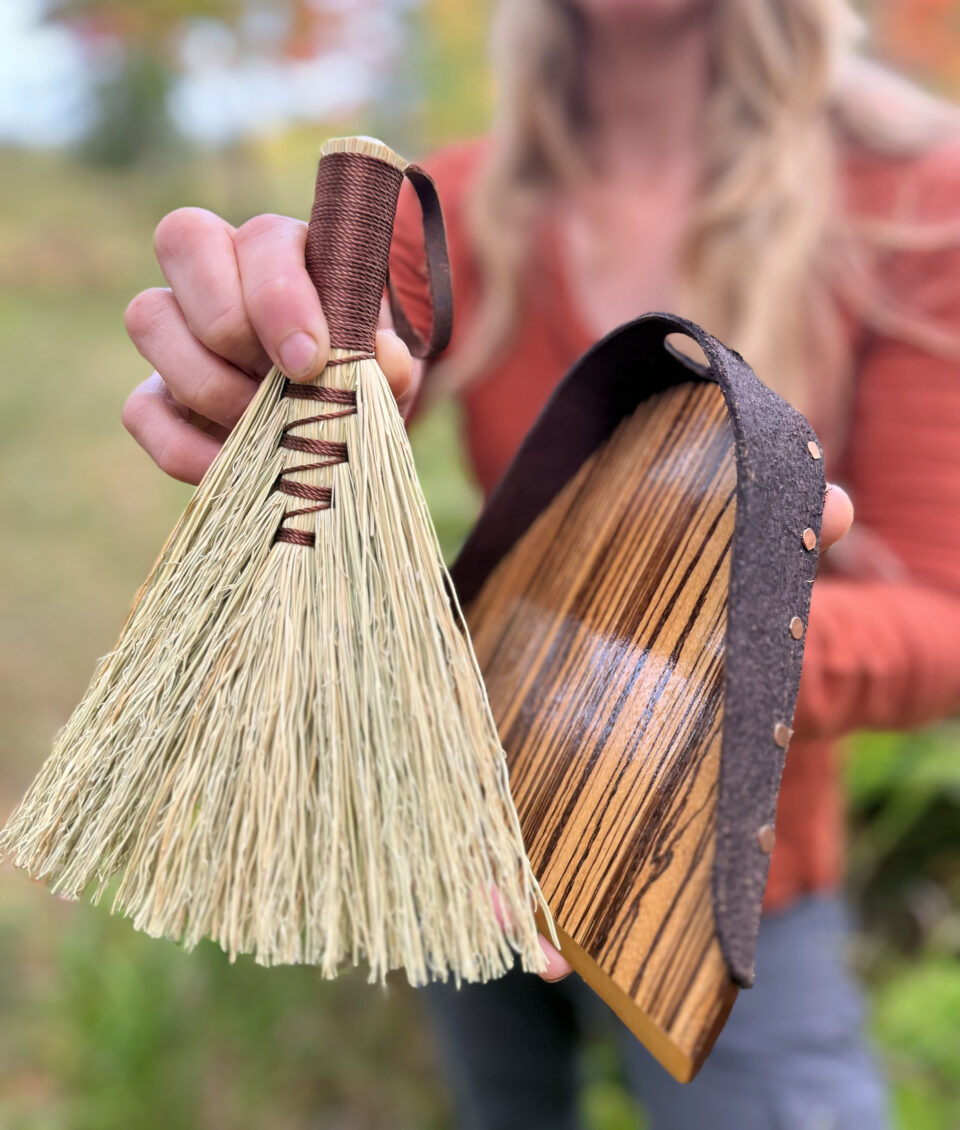The broom: it’s an object in every household, something we all need for the inevitable messes of our daily lives. But brooms can be more than a mere tool for sweeping up dirt. They can also be a work of art—something that’s both beautiful and functional. One person practicing this craft is North Shore resident Marybeth Garmoe. Garmoe is the owner of Ox-Cart Broom & Wood Works, where she makes handmade brooms, dustpans, and other goods that blend traditional techniques and her own sense of style.
Garmoe’s journey into broom making began 10 years ago, and according to her, was “completely by happenstance.” In 2014, Garmoe has an internship at the John C. Campbell Folk School in North Carolina’s Appalachian region, an area with a strong history of broom making. During the last week of her internship, a chance cancellation landed her in her first-ever broom making class.
“My body and mind connected with the process and final product in a way I never could have expected, and I’ve been making brooms ever since,” Garmoe said.
So how does one make a handmade broom? It starts with the materials. A typical kitchen broom is, essentially, a bundle of broomcorn tied to the end of a stick and stitched flat. As northern Minnesota has an abundance of trees, Garmoe’s broom making process often starts with a walk in the woods to harvest saplings.
“Often people think that my handles are branches from larger trees, but even if a branch looks really straight, they usually curve a little to reach the sunlight, so young, straight saplings work best,” she said. “I like to harvest species that resprout quickly, such as aspen and alder, and thankfully have friends with lots of those species on their land!”

The other main material used in broom making is broomcorn, also known as sorghum. Broomcorn is a versatile material—it’s one that Garmoe not only uses for the bristles of her kitchen brooms, but also to craft other objects like whisk brooms, veggie scrubbers, and pot scrubbers. Her work is infused with a playful sense of style, such as dyeing the broomcorn or using brightly-colored stitching string for pops of unexpected color.
“My brooms are rooted in tradition, but I’ve come to incorporate a lot of my own elements into my brooms. There are a few ‘lineages’ of brooms, and it can be easy to tell who a broom maker learned from by the style of brooms they make,” Garmoe said. “I like maintaining that tradition, but also want to bring some of myself and the world around me into my brooms.”
A woodworker as well as a broomaker, Garmoe makes her own dustpans using a technique called marquetry. Marquetry involves using thin pieces of various wood species to create an image. The results are one-of-a-kind dustpans of Garmoe’s own design. She also makes leather dustpans inspired by traditional Japanese rice paper dustpans. “I strive to incorporate woodworking into my business as much as possible,” she said.
Craft lies at the junction of artistry and functionality, a contrast that seems especially highlighted in Garmoe’s work. On the one hand, brooms and dustpans are used for some of the most mundane of chores—they are quite literally meant to get dirty. On the other hand, they can be works of art themselves. It may seem a curious contrast, but perhaps that’s part of the beauty of a craft like broom making: perhaps art and functionality don’t always have to be so fragmented; rather, we can infuse artistry even into the most unlikely corners of our lives.
Marybeth Garmoe’s work can be found at several shops along the North Shore, as well as through her website, ox-cartbroomandwood.com. She also teaches broom making classes through the North House Folk School in Grand Marais.




